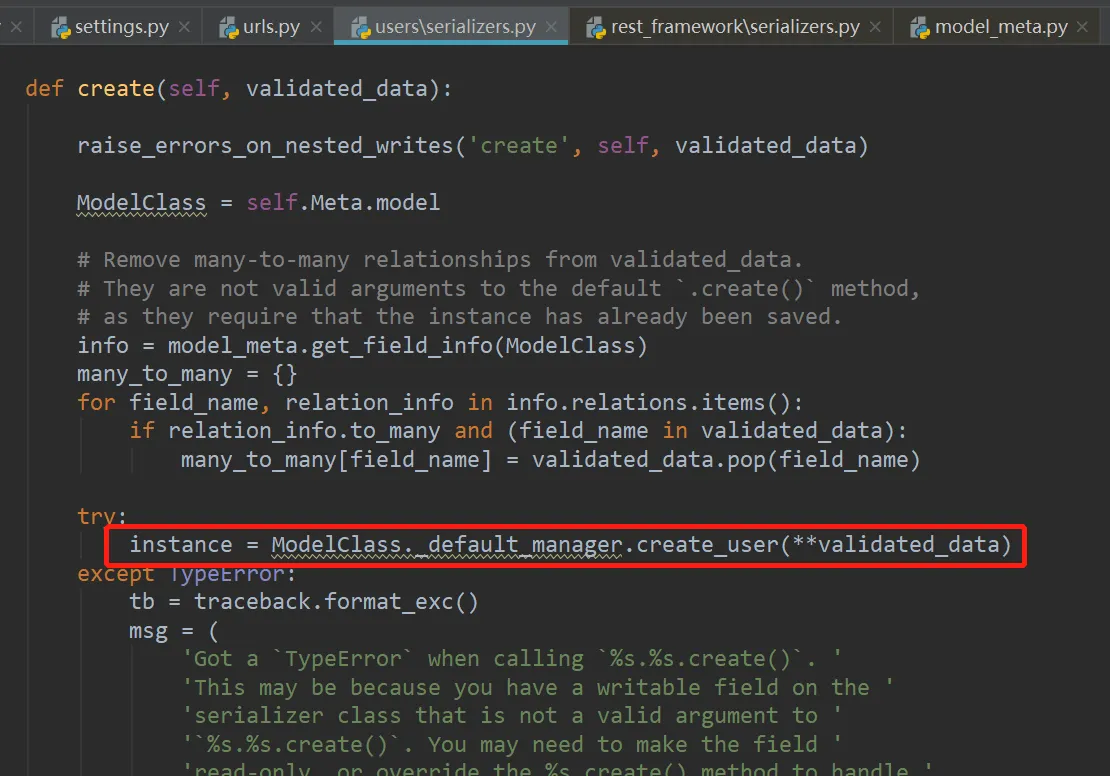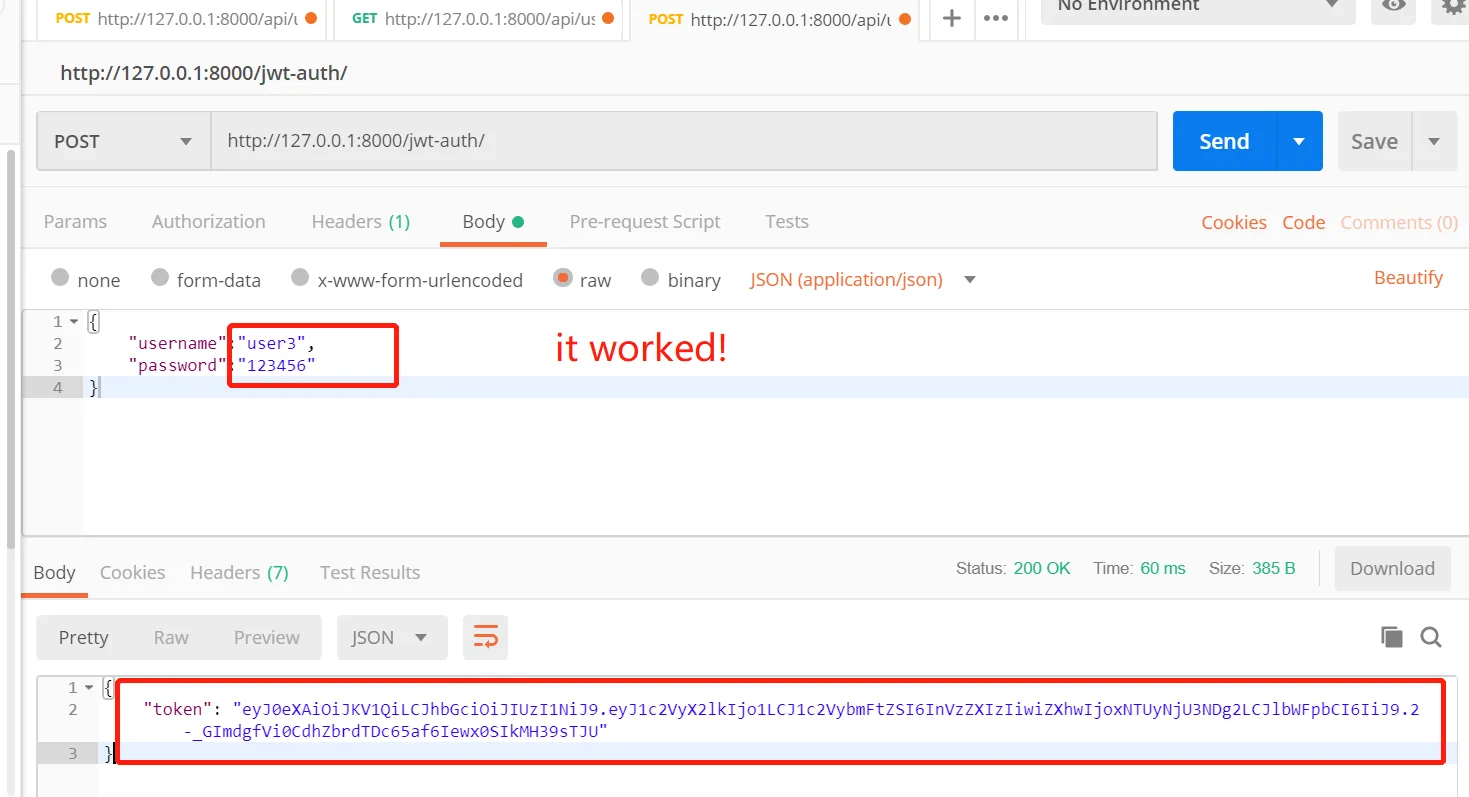JWT包对Django来说都存在文档不完善的问题,因此我尝试了DRF-auth_token包。这是一个很好的示例,我遵循了Django Rest Framework Token Authentication。理论上你可以访问
localhost:8000/api-token-auth/
urls.py:
from django.conf.urls import url, include
from django.contrib import admin
from django.contrib.auth.models import User
from rest_framework.authtoken import views
urlpatterns = [
url(r'^admin/', admin.site.urls),
url(r'^api/', include('api.urls', namespace='api')),
url(r'^orders/', include('orders.urls', namespace='orders')),
url(r'^api-token-auth/', views.obtain_auth_token, name='auth-token'),
]
获取用户令牌的方法不起作用,所以我自己重写了它以使其正常工作。
@api_view(['POST'])
def customer_login(request):
"""
Try to login a customer (food orderer)
"""
data = request.data
try:
username = data['username']
password = data['password']
except:
return Response(status=status.HTTP_400_BAD_REQUEST)
try:
user = User.objects.get(username=username, password=password)
except:
return Response(status=status.HTTP_401_UNAUTHORIZED)
try:
user_token = user.auth_token.key
except:
user_token = Token.objects.create(user=user)
data = {'token': user_token}
return Response(data=data, status=status.HTTP_200_OK)
我的版本有效。
http://localhost:8000/api/login/customer-login/
{"username": "thisguy@example.com", "password": "wombat"}
-->
{
"token": "292192b101153b7ced74dd52deb6b3df22ef2c74"
}
DRF的auth_token无法使用:
http://localhost:8000/api-token-auth/
{"username": "thisguy@example.com", "password": "wombat"}
-->
{
"non_field_errors": [
"Unable to log in with provided credentials."
]
}
settings.py
INSTALLED_APPS = [
'django.contrib.admin',
'django.contrib.auth',
'django.contrib.contenttypes',
'django.contrib.sessions',
'django.contrib.messages',
'django.contrib.staticfiles',
# third party:
'django_extensions',
'rest_framework',
'rest_framework.authtoken',
REST_FRAMEWORK = {
'DEFAULT_PERMISSION_CLASSES': (
'rest_framework.permissions.IsAuthenticated',
),
'DEFAULT_AUTHENTICATION_CLASSES': (
'rest_framework.authentication.TokenAuthentication',
)
}
看起来设置正确。我的数据库中的每个用户都有一个令牌。每个用户在数据库中都是“已认证”和“活跃”的。超级用户可以获取他们的令牌:
localhost:8000/api-token-auth/
{"username": "mysuperuser", "password": "superuserpassword"}
-->
{
"token": "9297ff1f44dbc6caea67bea534f6f7590d2161b0"
}
只有超级用户才能获得令牌,原因不明。
localhost:8000/api-token-auth/
{"username": "regularguy", "password": "password"}
-->
{
"non_field_errors": [
"Unable to log in with provided credentials."
]
}
为什么我的用户无法登录并获取他们的令牌?

 ]
] ]
]